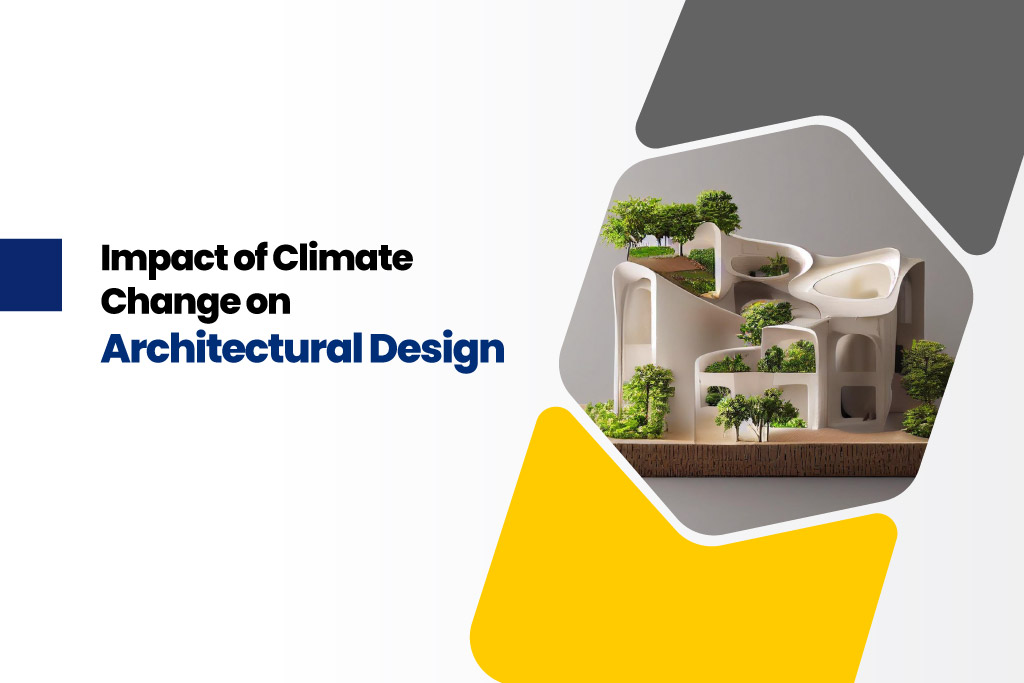The climate continues to change and the architecture field adapts to this to stay sustainable. Architects and designers have climate change as one of their challenges when creating buildings that focus on aesthetics, energy-efficient and eco-friendly. For instance, in regions where floods are common, then architects need to design considering the risk of damage.
However, with the right approach, architecture continues to shine with beautiful and sustainable art that meets the expectations of an ever-evolving world. Climate change can be in any form which means natural changes or because of human-caused changes. The Best B.Arch Colleges in Tamilnadu provide knowledge on modern architecture which has a huge influence over climate change when designing new buildings.
How does climate change influence architecture?
- Decisions are often driven solely by financial savings without considering the environmental impact. However, choosing eco-friendly options can result in long-term benefits for both the environment and the economy. For instance, energy-efficient buildings reduce energy expenses which promotes sustainability.
- Building new structures constantly instead of taking into account the prospect of renovating and reconstructing older structures that have been left or no longer serve a purpose.
- The way the building’s HVAC system, windows, and other systems are operated. The way a building functions has a big impact on how architecture affects climate change. Even though it is well known that architecture affects climate change, there are a lot of factors and materials used in building design that have both positive and negative environmental effects. This makes sustainability in architecture difficult to achieve.
What are the common challenges for architects because of climate change?
Weather events: Today’s architects have a difficult time creating environmentally friendly structures that can endure harsh weather conditions caused by climate change.
Flexible design techniques, such as strengthened building structures, raised foundations, and sophisticated stormwater drainage systems, are necessary for today’s buildings to survive strong hurricanes, intense storms, and increased flooding.
The risk of flooding is rising in many places due to rising sea levels and more extreme weather patterns. New flood-resistant design techniques are now required to keep buildings safe. Some of these techniques include the use of waterproof materials and elevation changes.
Renovating existing structures and encouraging investment in these endeavors are the goals. The frequency and intensity of extreme weather events are rising, and architects are crucial in coming up with ways to make communities more resilient to disasters and sustainable.
Carbon footprint: Architects must lessen the carbon footprint of their work, but there are certain specific challenges.
Public knowledge of how construction affects the environment is low, despite the rise in environmentally conscious consumers. Because of this, it may be challenging for architects to inform their clients about the importance of sustainable design and the advantages it offers to the project and the environment.
The reason that clients hesitate to accept green-inspired designs is the lack of awareness. And the myth of sustainable materials and technologies can be more costly than conventional options.
Heatwaves and water scarcity: Due to heatwaves, architects are being forced to design buildings with thermal comfort in mind. This involves taking into account materials that can keep buildings cool in hot weather, ventilation techniques, and the color of the walls and roof that transmit light and heat.
Another issue that architects must consider when designing is the scarcity of water. The availability of water decreases as temperatures rise and water cycles are interrupted. Therefore, low-flow plumbing and rainwater collection must be incorporated into building designs to maximize the resources. Building construction can present obstacles for architects, such as restricted wet construction to preserve water.
In many parts of the world, hotter summers and colder winters are becoming usual, so structures need to be built to withstand greater temperature extremes. To keep residents comfortable, this frequently involves using various materials or insulation techniques.
Energy efficiency: Building energy efficiency is becoming more and more crucial as energy costs keep rising. This involves including energy-saving elements in designs, such as solar panels and double-glazed windows.
Climate change is an essential issue, and architects’ choices about how to design their buildings affect the world in two ways: either they worsen the situation or they adjust to make their designs as climate-friendly as possible, reducing the energy-related impact of buildings.
Conclusion: Whether architects design new buildings or existing structures, architecture design may impact climate change more positively than negatively. Building materials, designs, and construction processes are part of the evolution of this climate change that influences architectural designs. Thus, it is certainly about the architects who can create more sustainable solutions from greener building materials to energy-efficient designs.
You can also provide solutions and resolve climate change challenges by acquiring B Arch degrees in the top colleges. Karpagam Architecture College offers architects an opportunity to establish new benchmarks in environmental improvement.






